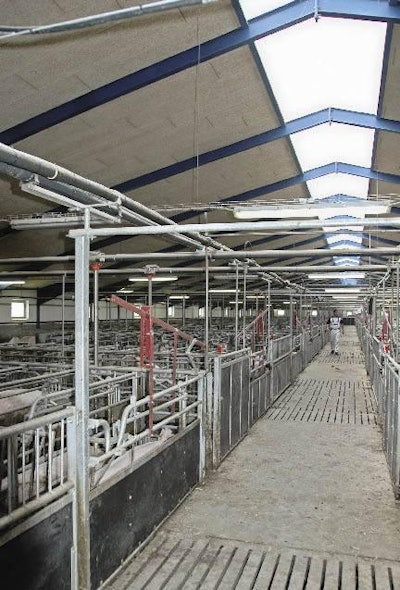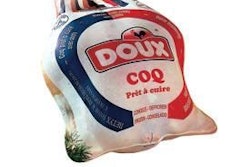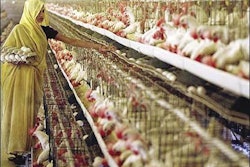
Performance figures achieved by the top 25% of Danish producers in 2006 are predicted to become the industry average in the year 2016. It would mean about 10% more pigs being produced nationally, raising questions over the facilities in herds as well as the marketing of the animals and meat.
The projection being made for Denmark in 2007 is an output of 26.6 million pigs, of which around 3.9 million will have been exported as live weaners and another 0.7 million finishers and sows sent abroad for slaughter. Some 20.5 million pigs are due to have gone through co-operative slaughterhouses, leaving 1.5 million for privately owned abattoirs.
How the industry's production profile is expected to change by 2016 was underscored recently in a series of presentations to foreign journalists by personnel from the Danish Meat Association (DMA). Most notably, forecasts were presented that the country's herds as a national average will be producing 27 slaughter pigs per sow annually. This would compare with 23.5 per sow produced in 2006.
Table 1 from DMA gives the underlying details. The coming 10 years are projected to bring more piglets born and weaned without a major change in the pre-weaning mortality rate. Feed efficiency will improve, carcase lean meat content will stay the same, but many fewer pigs will be lost in the grow-finish period.
These predictions were side-by-side with others on industry structure. Instead of the 3600 finishing units present in 2006, Denmark in 2016 is forecast to have between 1500-2000. The 3100 breeding-finishing herds of last year are thought likely to become 1000-1500. Instead of 750 piglet producers there are expected to be only 300-500. At the most, therefore, the forecasters think the pig sector of the next decade will have a total of 4000 units rather than the 7450 in existence in 2006.
Sizes for farrowing
But further figures mentioned by the DMA specialists were equally telling. This time the numbers referred to a comparison between 1995 and 2005 for the size of litters and of sows. At the start of that period the average number of piglets born per litter nationally was 11.9. By the end it had risen to 14.9. In the meantime, said the specialists, Danish sows became 20% heavier and 10% longer.
The currently recommended dimensions for a farrowing pen in Denmark are 170 cm wide by 270cm long, in which the length of the sow's crate is 210 cm (without including the trough) and the width (measured at the rear) is 90cm. Partly slatted floors are required by law and their front solid section will be 150-160cm long. Put in the additional factor of an extended weaning age, however, and the Danes believe they need to keep reviewing the measurements of farrowing facilities to cope with the extra sizes.
Dr Vivi Aarestrup Moustsen, of the department of housing and production systems at DMA/Danish Pig Production, commented that the design of the farrowing pen had changed in only minor respects during the last decade. Yet it had been a time not only of bigger sows with larger litters, but also of different production methods that impacted on the lactating sow. Among these have been the increased use of liquid feeding in lactation, the introduction of diffused ventilation, the modern high-profile focus on animal welfare and the requirement in Danish law to provide pigs with so-called enrichment materials for their use in rooting and nesting behaviour.
The legislative demand to have at least a part-slatted floor made it easier to integrate the supply of an enrichment material, she added, but the use of solid flooring remains challenging in other ways. An upcoming project at DMA will look at possible soft floors and cooling, in addition to ventilation that has air inlets and outlets under the floor. Future pen designs may also need to be equipped for piglets to be fed automatically.
There is even some research at a Danish institute into the removal of crates in favour of loose farrowing systems. A prime driver in this has been the European Union's law which will require group gestation instead of stalls. Inevitably, there are those who think that loose housing in pregnancy should be followed by a similar non-confinement in farrowing. But the Danes are nowhere near an answer yet on protecting piglets in the absence of crates. They indicated it could be 2020 at the earliest before a viable alternative to crate farrowing could be proposed that did not involve unacceptably high piglet mortality rates — and so did not cut into the gains made elsewhere in producing more pigs per year. PIGI

















